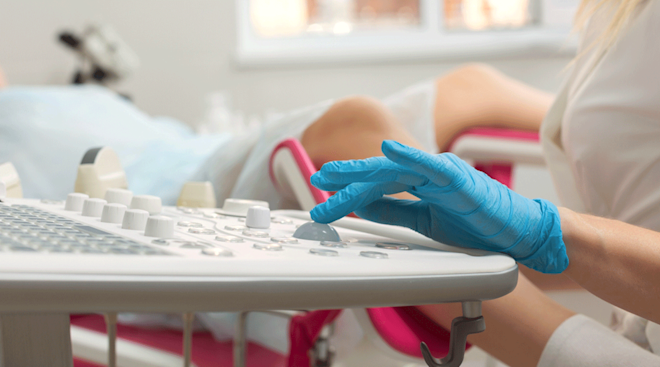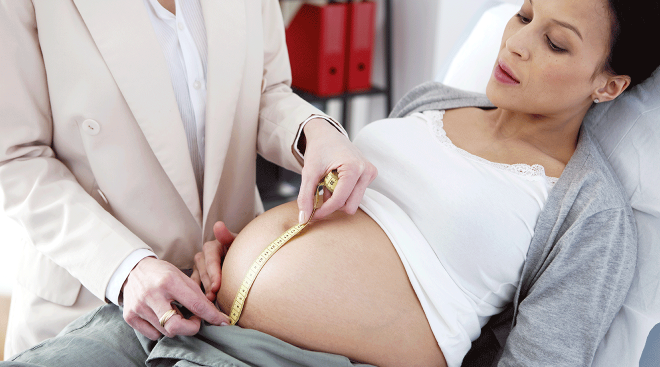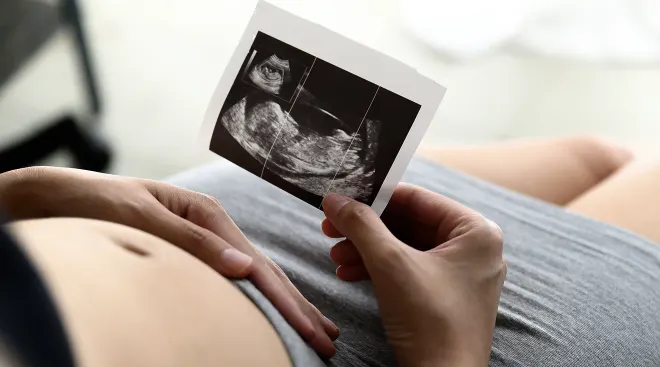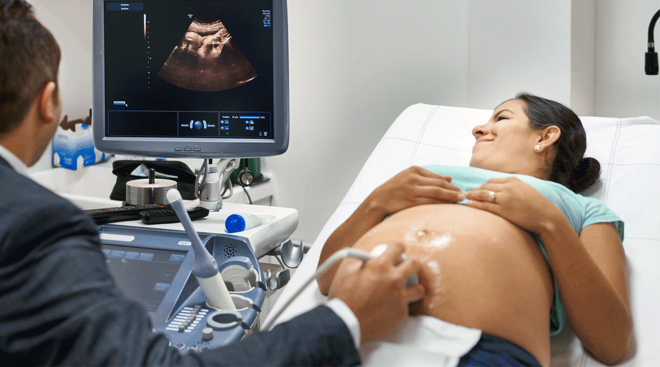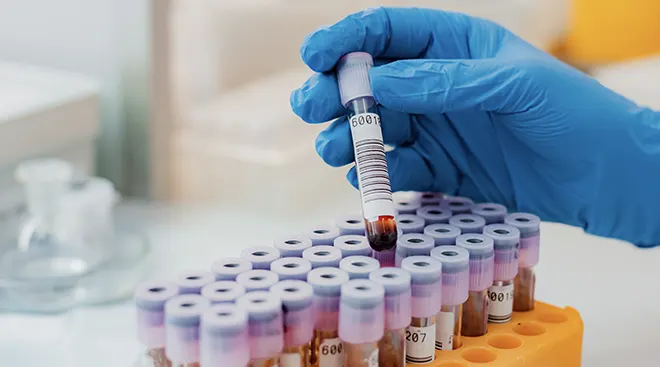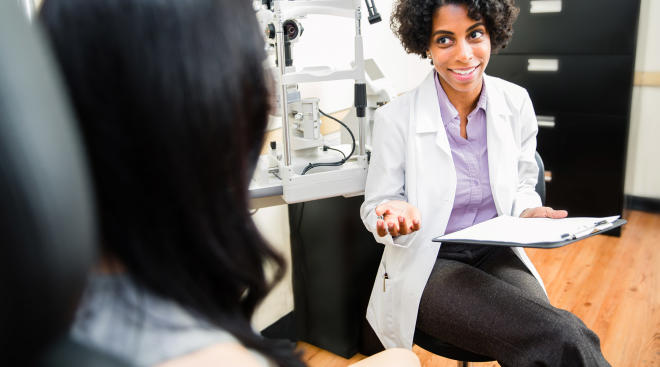What Is Amniocentesis?
You have countless decisions to make when expecting. Some of them are easy (paint the nursery green or yellow?), while others are more challenging. One of the more difficult choices many moms-to-be face is whether to have an amniocentesis (aka amnio). This prenatal test can reveal a world of information about baby’s health, but there are some potential amniocentesis side effects to be aware of. It’s not right (or necessary) for everyone, so you’ll want to do your diligence and talk to your doctor. So what is amniocentesis exactly, what does it test for and are there amniocentesis risks to weigh? We’re breaking down the facts to help you make an informed decision. Read on to learn more about the purpose of amniocentesis.
A clean, pale yellow liquid called amniotic fluid surrounds your growing baby. Not only does the fluid help protect the fetus against injury and infection, but it also holds a wealth of information about baby’s health. That’s because the fluid captures cells shed by the fetus that can be used for diagnosing genetic disorders.
To access these cells and the genetic information stored within them, pregnant women have the option to undergo an amniocentesis test, which requires removing a small amount of amniotic fluid from the uterus.
An amniocentesis is by no means obligatory. But women at a greater than usual risk for birth defects—whether because they’re age 35 or older, have a chromosome abnormality themselves or have previously conceived a child with a genetic disorder—will typically be offered an amniocentesis. Your doctor may also recommend an amnio if your results from a triple or quad screen test or a noninvasive prenatal test warrant a more precise assessment.
What’s the purpose of amniocentesis?
Now that you understand the basics of what amniocentesis is, you’re probably wondering what it’s used for. Typically, the purpose of amniocentesis is to diagnose fetal chromosomal abnormalities, neural tube defects and genetic disorders, explains the American Pregnancy Association. If your doctor offers or suggests an amniocentesis, it’s a good idea to discuss how the results could affect your pregnancy and baby’s health, as well as any amniocentesis side effects or risks.
You might consider an amnio if:
- You or your partner have a family history of certain genetic conditions
- Results of prenatal DNA screening were positive or suspicious
- You had chromosomal abnormalities in a previous pregnancy
- You had irregular ultrasound results
- You are 35 or older
What does amniocentesis test for?
So now you’re probably wondering: What is amniocentesis used to test for? According to the Mayo Clinic, amniocentesis is typically performed between the 15th and 20th weeks of pregnancy. It’s used to provide key genetic or medical information about the fetus, and can identify a number of problems, including:
- Cystic fibrosis
- Down syndrome
- Anencephaly, a condition in which the fetus is missing a portion of the brain
- Neural tube defects
- Sickle cell anemia
- Rare metabolic disorders that can be genetically inherited
Sometimes amniocentesis can also be performed later in the third trimester to monitor baby’s development, explains John Hopkins Medicine. When an induction or c-section is necessary to prevent complications to Mom; the test can determine if a premature baby’s lungs are ready for birth. It can also identify a fetal infection or Rh disease, as well determine paternity.
What’s more, sometimes the purpose of amniocentesis is to treat polyhydramnios, a condition categorized by excessive amniotic fluid, according to the Mayo Clinic.
An amniocentesis may sound scary, but, in reality, it’s a pretty simple procedure. “I tell patients that when I had my amnio, I was nervous too, but was surprised by how easy it was,” says Britton Rink, MD, chair of the American College of Obstetricians and Gynecologists’ Committee on Genetics.
Here are the typical amniocentesis steps:
1. The doctor first uses an ultrasound to determine the position of the fetus and finds the best spot from which to remove amniotic fluid.
2. Your abdomen is cleaned with antiseptic. Some doctors may even inject a numbing medication, Rink says.
3. A thin, hollow needle is inserted through the belly and into the uterus and amniotic sac. Don’t worry, your doctor is also carefully monitoring baby’s vital signs throughout the entire process, and she’ll make sure the fetus doesn’t move toward the needle. You may experience cramping during and a few hours after the procedure.
4. The doctor uses a syringe to withdraw a small amount (normally, no more than an ounce) of amniotic fluid and then removes the needle. She’ll place a bandage on the needle site.
While preparations may extend the process, the actual procedure takes between 30 seconds and two minutes. Afterward, your doctor will pack the fluid into a special container and send it off for testing. Results usually arrive in two weeks, at which point you can discuss them with your doctor or a genetic counselor.
What happens after amniocentesis?
If you can, it’s best to go home and relax for the rest of the day following an amniocentesis. “Similar to how your arm may be sore after a flu vaccine, your belly may be slightly bruised or sore, and a little bit of spotting and cramping is normal,” Rink says. Discomfort at the amnio site is among the normal and anticipated amniocentesis side effects, but it’s important to monitor yourself for further signs of complications. If you lose fluid, experience progressive bleeding or have a fever over 101 degrees Fahrenheit, let your doctor know right away.
While an amniocentesis is a fairly straightforward procedure, it does come with a slight risk of miscarriage. Of course, even the slightest chance of losing your baby is understandably terrifying, but it’s important to know, Rink says, that when the amniocentesis test is performed during the second trimester, the miscarriage risk is about 0.3 percent (or 1 in 300); this isn’t much different than the normal risk of miscarriage during this stage of pregnancy. Rink also points out that actual amniocentesis risks may be much lower—in the neighborhood of 1 in 500 or 1 in 1,000, according to newer statistics. One study found the rate to be even more like 6 in 10,000.
According to the Mayo Clinic, other amniocentesis side effects and risks are quite rare, but can include:
- Cramping
- Bleeding at needle site or from the vagina
- Leaking of amniotic fluid at the needle site or from the vagina
- Needle injury to the fetus
- Infection of the uterus
- Rh sensitization if you have Rh-negative blood
- Potential mother-to-child transmission of HIV, hepatitis B or other infections
So just how accurate is amniocentesis? In a word, very. The amnio test has a greater than 99 percent accuracy rate for diagnosing Down syndrome and only slightly less for other genetic disorders. But it doesn’t identify all birth defects, such as autism, hearing disabilities, cleft lip or heart problems. In addition, 99 percent is not 100 percent, so there’s an extremely rare (though possible) chance of a false positive or a false negative.
Chorionic villus sampling—or CVS—is another diagnostic prenatal test that can determine if a baby has a genetic disease. Instead of collecting amniotic fluid, the CVS procedure obtains a small amount of placenta tissue, by inserting either a tube through the cervix and into the placenta, or a needle through the abdomen into the placenta. The risk of miscarriage with CVS is similar to that of an amniocentesis, says John Williams, MD, director of reproductive genetics at Cedars-Sinai Medical Center in Los Angeles. The main difference is that the CVS is done earlier in pregnancy, typically between weeks 10 and 13.
Expecting parents may also be offered noninvasive prenatal testing (NIPT). These blood tests carry no risk to the fetus, but unlike amniocentesis and CVS—which are diagnostic tests that determine whether or not your baby has a disorder—NIPT is simply a screening test that indicates the risk that your baby could have a disorder. If your NIPT raises concern, your doctor will recommend an amniocentesis or CVS. It’s important to make big decisions about your pregnancy only on the result of these diagnostic tests, Williams says.
Now that you have all the facts about amniocentesis, you may be wondering if the diagnostic procedure is right for you. The truth is: Only you can decide. Ultimately, you and your partner know best whether or not you want to be told if your unborn child has a genetic disorder. If you need help coming to a decision, have a conversation with your doctor or genetic counselor.
The main purpose of amniocentesis is to offer more information to help you feel empowered and prepared in the later half of your pregnancy. Since this is an optional test, it can help to weigh the benefits of amniocentesis with the drawbacks (including any potential amniocentesis side effects) to ensure you feel confident in your choice.
To that end, the advantages of amniocentesis include:
- Getting more information about certain medical or genetic conditions that could cause life-threatening birth defects or significantly impact baby’s quality of life after birth
- Feeling physically, mentally and emotionally prepared to care for a child with a disability
- An early diagnosis, which in some cases, may allow for treatment before birth
If you want a clear yes or no answer about whether baby has a genetic disorder, the amnio test may be right for you. Based on the results, you can plan ahead.
Remember, while an amniocentesis is very accurate at diagnosing certain abnormalities, it has its limits, says Angie Jelin, MD, an assistant professor of gynecology and obstetrics at Johns Hopkins Medicine in Baltimore. As she says, “No test is going to be perfect.”
About the experts:
Angie Jelin, MD, is an assistant professor of gynecology and obstetrics at Johns Hopkins Medicine in Baltimore. he received her medical degree from Harvard Medical School in Boston, Massachusetts.
Britton Rink, MD, is chair of the American College of Obstetricians and Gynecologists’ Committee on Genetics. She earned her medical degree from Indiana University in Bloomington, Indiana.
John Williams, MD, is the director of reproductive genetics at Cedars-Sinai Medical Center in Los Angeles. He earned his medical degree at UCLA in Los Angeles, California.
Please note: The Bump and the materials and information it contains are not intended to, and do not constitute, medical or other health advice or diagnosis and should not be used as such. You should always consult with a qualified physician or health professional about your specific circumstances.
Plus, more from The Bump:
Navigate forward to interact with the calendar and select a date. Press the question mark key to get the keyboard shortcuts for changing dates.

































